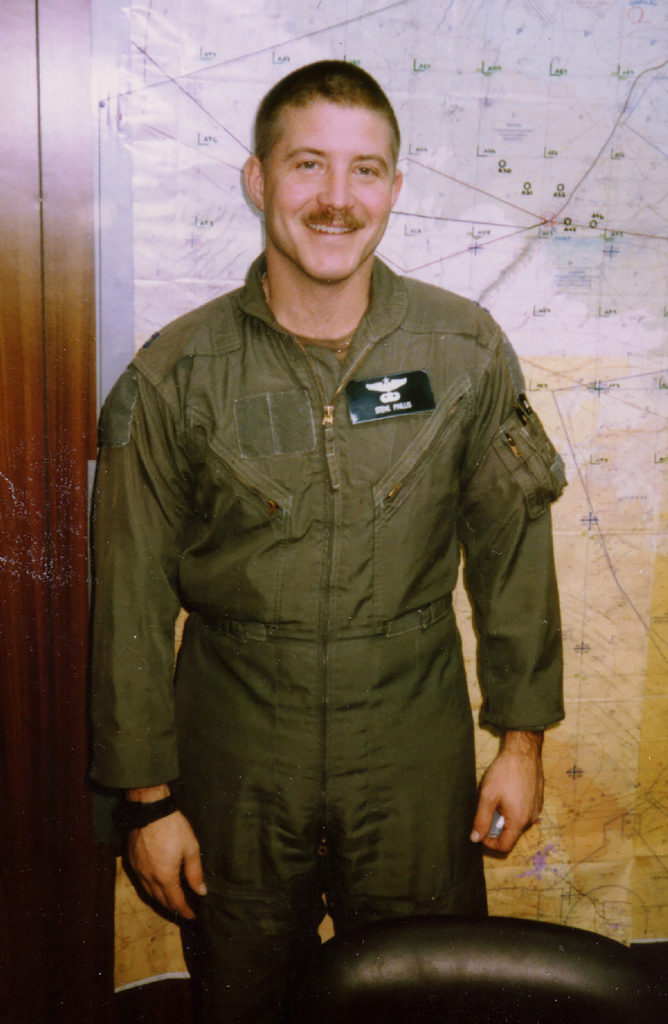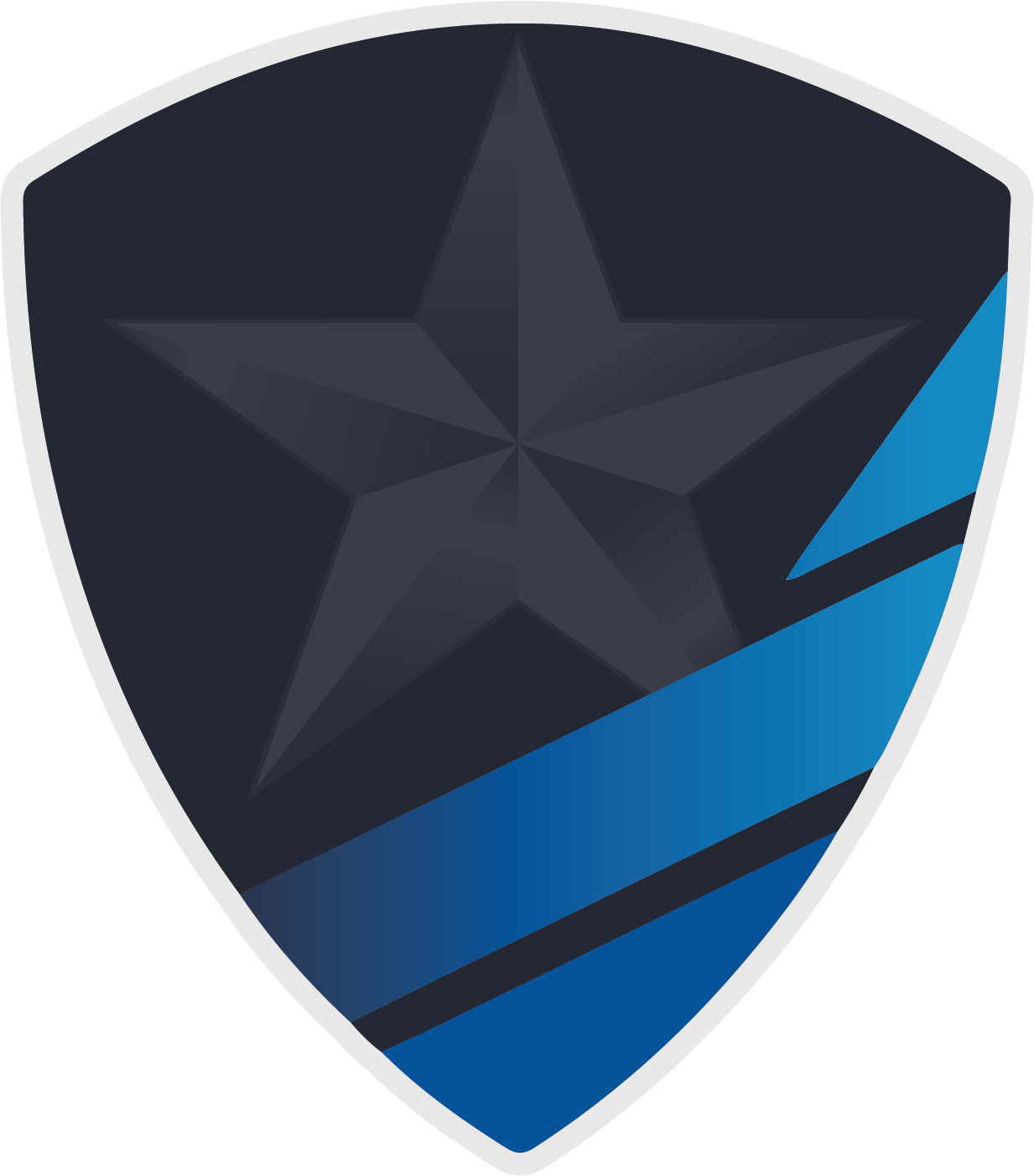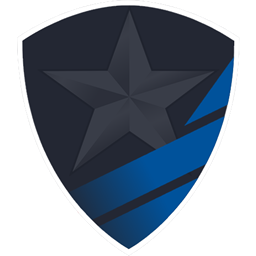Jim “Boots” Demarest is the Gulf Coast Live guest today. He is on a mission to have the Medal of Honor awarded posthumously Capt. Phillis for his actions on that day. Air Force Brigadier General and Naples resident, Jim Demarest, joins us to tell that story, and explain why he’s working to have the Medal of Honor awarded to Capt. Phillis.
Three minutes and 45 seconds is an eternity when hundreds of angry people are trying to kill you.
Two A-10 pilots, flying together for the 30th time in Desert Storm on Feb. 15, 1991, attacked a massive formation of Iraqi armor in the deserts of Kuwait.

Capt. Stephen Phillis was killed in action when his A-10 was shot down during Desert Storm.
One pilot, a young first lieutenant named Robert Sweet, survived and became a prisoner of war (POW). The mission commander of the flight, an experienced captain, who lingered above the site of the shoot down for three minutes and 45 seconds—intentionally drawing fire, attempting to help the search and rescue of his wingman, was ultimately shot down himself.
That pilot, Capt. Stephen R. Phillis, received the Silver Star posthumously for his actions that day.
Now, more than 30 years after the incident, a former U.S. Air Force Academy boxing buddy of Phillis, after years of research, is pressing for Phillis to receive a military award more befitting his sacrifice.
“You have a hard time explaining what heroics in an airplane looks like,” said Jim Demarest, a brigadier general in the Florida Air National Guard and himself a veteran of Desert Storm. “Steve’s heroics check all the boxes.”
Into ‘Bad Guy Land’
On Feb. 15, two A-10s assigned to the 353rd Tactical Fighter Squadron, call sign Enfield Flight 3-7, had one tasking for the day. The attack jets were to take off from King Fahd International Airport in Saudi Arabia, hit a refueling tanker, and head toward targets in the northern tip of Kuwait.
Then Sweet, the new guy in the squadron, was combat-paired with Phillis, who was the most experienced in the squadron and had been the weapons officer. Sweet had flown the most sorties of the squadron, one more than Phillis, by the time Feb. 15 rolled around.
“He was a little nervous,” Sweet said of his wingman that day. “He was … smarter than I was in a lot of ways.”
After the A-10s hit the tanker, they were retasked to work with F-16s farther north into Iraq near Basra where there were some “pretty lucrative targets” near an oil field. The A-10s turned north, checked in, and heard multiple “breaks”—F-16s avoiding surface-to-air missiles (SAM) fired by Iraqis. The A-10s knew if the area was dangerous, they shouldn’t hang out, and targets could be left to “the night guys”—bombers or other aircraft tasked to hit the targets after nightfall, Sweet said.
Phillis made the call to turn back and return to the first target. They moved back toward the Iraq-Kuwait border, which was “still bad guy land” at this time of the war.
The A-10s flew above a massive formation of the advanced 2nd Al Medina Armored Division—the elite formation of the Iraqi Republican Guard later made famous in the Battle of Medina Ridge, one of the largest tank battles in U.S. history.
Tens of thousands of Iraqi soldiers, columns of T-72 tanks and other armor, anti-aircraft artillery (AAA) batteries, and advanced Russian-made SA-13 surface-to-air missile systems were spread out over six miles in the sand below. U.S. bombing runs had damaged much of the Iraqi armored units, but the Medina was “pristine,” Sweet said.
The sun began to dip low in the sky as the A-10s arrived and planned a couple of passes. Sweet, as he came off a pass, was shot at by a surface-to-air missile. Phillis radioed at his wingman “Chaff, flare! Chaff, flare!”
Sweet deployed flares. He saw this one, “and if you see it, you normally beat ‘em, and I did.”
If something on the ground shoots at you, it becomes a new target, and the A-10s turned to target the SAM position. Phillis did a gun pass over the SAM site, then radioed Sweet to turn in and do his own pass on the target.
As he was rolling, stick right at about a 60-degree bank, he was hit by another SAM from behind. The explosion blew his A-10 wing level at about 13,000 feet before it began to dive.
“I am hit, and I am heading south,” Sweet said on the radio.
The explosion blew off part of the A-10’s right wing, the aileron, the outboard flap, and took out the A-10s hydraulics. “Everything went into rapid mode,” he said. As the Thunderbolt II went into a steep spiral, Sweet radioed, “I’m out,” and punched out of the aircraft.
Phillis relayed the situation to the airborne warning and control system (AWACS) saying, “We got two SAM launches. My wingman is bag at this time. I have him in sight.”
Dangling below a bright white and orange parachute, over an elite Iraqi armored division, Sweet saw .50 caliber guns and AAA fire in his direction.
“There was a rush, a little jolt, and I was hanging in the chute and it was all quiet,” Sweet told People Magazine in 1991 about the ejection. “All that panic, throwing switches and bells going off, and then it was just dead quiet in the chute. Just a little breeze. Peaceful, almost. I threw off my mask, then looked down. I could see all the tanks and I was trying to steer away from them, but I knew I was going to hit close. That’s when I said, “Oh, man, this is not looking good.’”
Above, Phillis switched into Sandy, or the A-10 search and rescue (SAR) mode. He radioed that he saw a good chute and marked the ejection site coordinates. He radioed the nearby E-3 Sentry AWACS that his wingman was down and asked for more aircraft to come and help the SAR effort.
These steps are the typical duty of a wingman in a downed aircraft situation—but Phillis stayed. Radio traffic showed confusion as incoming aircraft were not clear where to head.
Phillis flew an orbit over the armored division to draw fire away from Sweet as he parachuted down. He radioed incoming A-10s, trying to direct them to his position since the aircraft did not have radar.
The incoming A-10s could not spot him, so Phillis fired flares from his A-10—drawing the attention of both the Iraqis and the incoming help.
After repeated attempts to help the incoming aircraft locate him, Phillis realized the increased danger of the situation. An Iraqi SA-13 hit Phillis’s A-10, lighting it on fire. He radioed to the incoming A-10s to leave, then radioed his own fate.
“Enfield 3-7 is bag as well,” Phillis radioed to the AWACS with a calm tone.
With the aircraft on fire and disintegrating, Phillis turns south in an attempt to get away from the Iraqis and Sweet’s ejection site. His A-10 ultimately crashed, cartwheeling through the Kuwaiti sand, and was totally destroyed.
As Sweet approached the ground, hundreds of Iraqi soldiers rushed to him. He injured his leg on landing, about 50 yards from a T-72 tank. “I stuck up my hands, but when they kept shooting, and I didn’t know whether they were aiming at me, I bowed my head and covered my face with my arms,” Sweet told People.
Sweet was beaten—“They were pissed off because I had just been dropping bombs on them”—and he was captured, a prisoner of war. He was ultimately moved to a prison at a Baathist Party security compound—the famous Baghdad Biltmore—that was targeted by F-117s on Feb. 23. He was then moved to a civilian prison. When other POWs arrived, Sweet learned that his wingman was shot down as well.
After the incident, U.S. forces only picked up one locator beacon. Knowing that both A-10s were shot down, the ultimate fates of Phillis and Sweet were not known until March 6, when the POWs were released, and a Red Cross plane flew them out of Baghdad. It wasn’t until Sweet got off the plane—and Phillis did not—that his fate was known.
After U.S. forces liberated Kuwait and fought the Iraqi forces back, they located the wreckage of Phillis’ A-10 and discovered his remains inside, along with evidence that the ejection seat was not fired.
‘What Does a Pilot Have to Do?’
For Demarest, himself a USAF pilot and U.S. Air Force Academy graduate, the story of Phillis’s bravery should not end there. Phillis received a Silver Star posthumously for his actions, and since his A-10 was a combat loss, there was not an extensive investigation. No Accident Investigation Board determined details of the incident.
Beginning about 1997, Demarest embarked on a mission to determine exactly what happened and to ensure that Phillis is recognized at a level he deserves. More than 20 years of research, interviews, records requests, and even a 65,000-word manuscript for a possible book, have resulted.
“I want the world to know Steve’s story,” Demarest said. His “forensic” review focused on the radio calls of the day, piecing together a timeline that was not extensively considered around the time of the crash.
“No one took the time to analyze what happened,” he said. “The three minutes and 45 seconds represent true heroics here.”
Those three minutes and 45 seconds show that Phillis acted “above and beyond the call of duty.” A seasoned flight leader would note the successful ejection, the good chute, and the approximate location of the landing. Phillis, however, stayed—he put himself in grave danger repeatedly to protect Sweet as he parachuted to the ground. He made himself visible, including to the Iraqis, in an attempt to bring in search and rescue help, flying a dark green A-10 against a blue sky, orbiting “10,000 feet over 10,000 angry dudes.”
“He earned his right to leave,” Demarest said of Phillis. “But he stays three minutes and 45 seconds. To a pilot, it is an eternity.”
After Phillis was hit, radioing he was bagged as calmly as if in a casual phone conversation, he then tried to follow Rule No. 1 of combat search and rescue by not becoming part of the search, leaving the dangerous area on his way down to try to let SAR concentrate on Sweet.
When Desert Storm ended, there was a large, public push to bring troops home quickly. Investigations and awards were not as important, Demarest contends. And in a combat situation, the push to account for what happened is not as urgent. “As soon as you confirm a KIA or a plane [crashes], the investigation stops. It’s not part of the process. That’s not a dig, it’s just a fact,” Demarest said.
Now, however, Demarest said the time is right for another look at Phillis’s case. The Air Force just went through a large relook at its valor awards during the Global War on Terrorism, including upgrading the Air Force Cross for Master Sgt. John Chapman to the Medal of Honor—the only Airman to receive such an award for combat in Iraq and Afghanistan. Several other Silver Stars and Bronze Stars with Valor Device have also been upgraded.
“There’s an appetite,” he said. “I’m cautiously optimistic.”
The Air Force has, since the Vietnam War, been “stingy” on its awards, especially during Desert Storm, Demarest said. There was a sense that USAF in the Vietnam era inflated its awards, so, since then, the Air Force has been more conservative.
Demarest now is leading a push for Phillis to receive the Medal of Honor posthumously for his actions that day. He’s reaching out to political connections and officials in and out of the Air Force, sharing his findings and trying to make a case.
There are similar stories in USAF history. For example, the story of Lt. Col. Leo K. Thorsness. His wingman was shot down during a surface-to-air missile suppression mission in North Vietnam in 1967. Thorsness circled the descending parachutes, keeping them in sight to relay the position for search and rescue. During this, a nearby MiG-17 flew by and Thorsness shot it down and then left to find a tanker. When he was told there were more MiGs nearby threatening search and rescue helicopters, Thorsness returned to damage one and drive the others away, before landing at a forward operating base.
There’s the story of Col. William A. Jones III. In 1968 in North Vietnam, Jones was flying an A-1H Skyraider as an on-scene commander in an attempted rescue of a downed pilot. Jones was repeatedly hit by anti-aircraft fire, but continued the search. In another pass, Jones was hit by multiple rounds of automatic weapons fire, igniting a rocket in the cockpit and causing a fire in the fuselage. He jettisoned the canopy, as fire began to spread across his body. Despite this, he flew the crippled plane back to base to pass along information for the rescue before receiving medical assistance.
Phillis staying to help Sweet “is the definition of ‘gallantry beyond the call of duty’ given the intense anti-aircraft fire, the enemy’s awareness of his position, his lack of supporting aircraft, and his inability to safely escape because of his low altitude and the A-10’s lack of speed,” Demarest wrote in a document pressing the case. “Captain Stephen Richard Phillis’ conduct in the face of mortal danger with complete disregard for his personal safety was aimed at saving another. Is this not exactly what the Medal of Honor should recognize? What does a fighter pilot have to do to earn the Medal of Honor?”
Sweet agrees. Phillis “gave his life for his country,” and “he deserves the highest honor this country can give him,” Sweet said.
Author, Brian W. Everstine Original post: https://www.airforcemag.com/person/brian-w-everstine/

